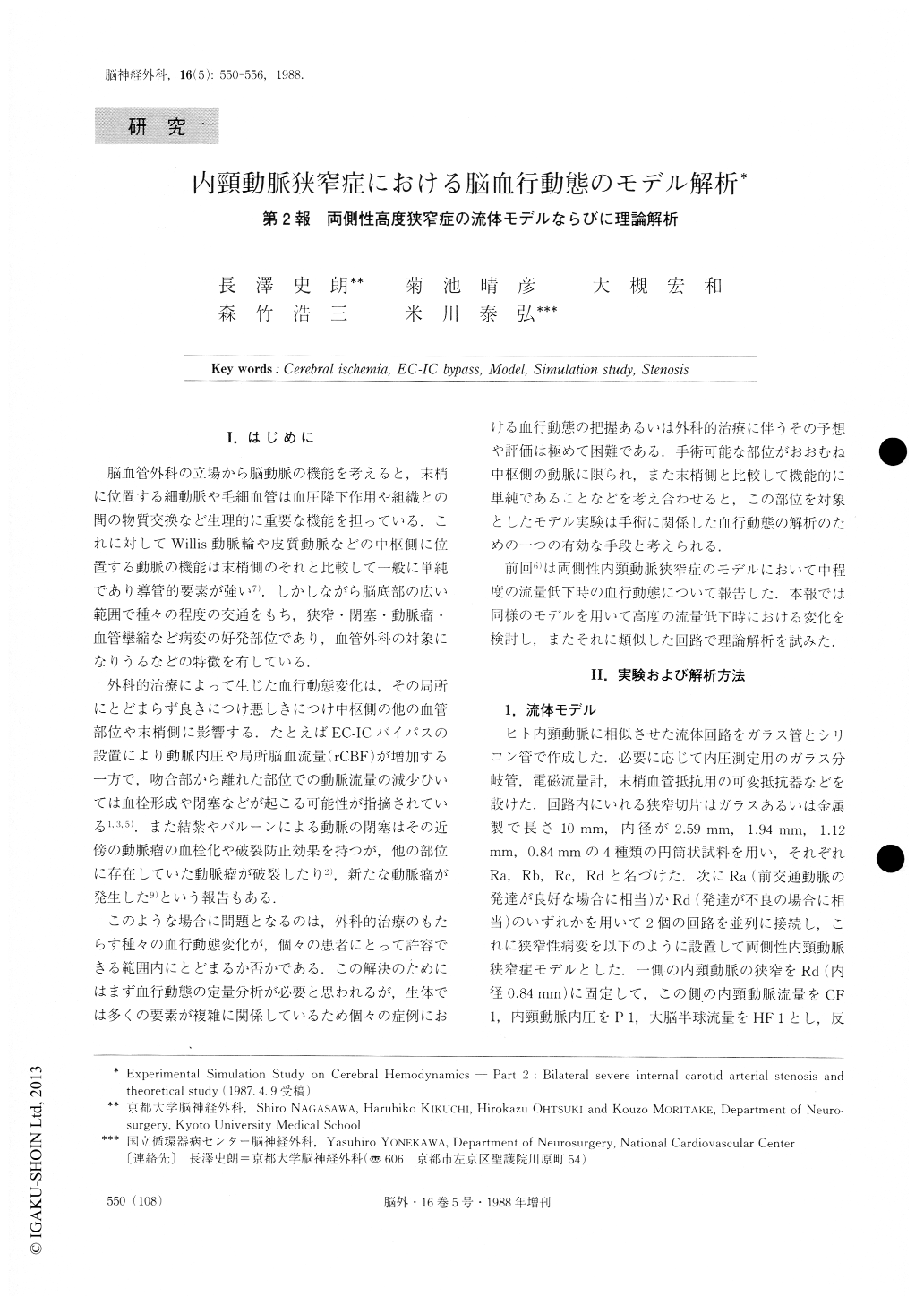Japanese
English
- 有料閲覧
- Abstract 文献概要
- 1ページ目 Look Inside
I.はじめに
脳血管外科の立場から脳動脈の機能を考えると,末梢に位置する細動脈や毛細血管は血圧降下作用や組織との間の物質交換など生理的に重要な機能を担っている.これに対してWillis動脈輪や皮質動脈などの中枢側に位置する動脈の機能は末梢側のそれと比較して一般に単純であり導管的要素が強い7).しかしながら脳底部の広い範囲で種々の程度の交通をもち,狭窄・閉塞・動脈瘤・血管攣縮など病変の好発部位であり,血管外科の対象になりうるなどの特徴を有している.
外科的治療によって生じた血行動態変化は,その局所にとどまらず良きにつけ悪しきにつけ中枢側の他の血管部位や末梢側に影響する.たとえばEC-ICバイパスの設置により動脈内圧や局所脳血流量(rCBF)が増加する一方で,吻合部から離れた部位での動脈流量の減少ひいては血栓形成や閉塞などが起こる可能性が指摘されている1,3,5).また結紮やバルーンによる動脈の閉塞はその近傍の動脈瘤の血栓化や破裂防止効果を持つが,他の部位に存在していた動脈瘤が破裂したり2),新たな動脈瘤が発生した9)という報告もある.
Although cerebrovascular surgery, typically bypass procedure for example, is considered to change hemodynamics not only near the region but in remote sites, their quantitative speculation and evaluation are usually difficult because of mutually related multiple factors in a living body. One of the effective means is to simulate expected operative procedures and resulting changes by use of a hydraulic vascular model. We have already reported the hemodynamics in bilateral moderate ICA stenosis and their changes after EC-IC bypass.

Copyright © 1988, Igaku-Shoin Ltd. All rights reserved.


